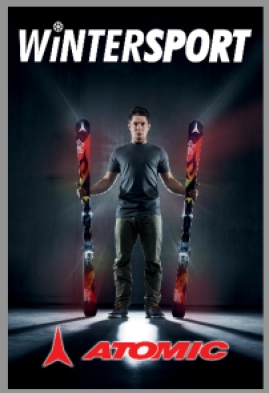Now that mountains are covered with a precious white color, looking like a bride at its best; ski season is at its peak!
Well, we surely cannot ignore the thousands Lebanese and foreigners that are heading to Lebanon’s famous ski areas and destinations worldwide, enjoying their favorite winter sport. Just like with any sport, caution has to be taken to make sure your hobby does not turn into a nightmare because as much as it is an enjoyable hobby, several precautions need to be taken. One of the major risks faced during skiing are sunburn, frostbites, knee and head injuries. Some injuries are light while some others can be posing a life threat on the person.
Skiing involves speed, going downhill facing several barriers among them other skiers. If you are not well trained and wearing the proper safe gear, you are at risk of injury and of causing injuries to others.
- Study your ski area: you have to follow up on the weather, only stay within the area considered safe and open for skiing. Do not try to do the hero and go off-tract heading to some non-ready areas avoiding the crowd. Learn the variations of your terrain. Learn how to stop safely when facing an object, a rock or another skier. Watch out for beginners that would pose a health risk on you and themselves.
- Wear the proper gear and make sure you are wearing a well-fitted, good quality ski gear. Do not go skiing with anything broken thinking that you will be able to manage it.
- Do not ski when the lights are dim and it is getting darker. No matter how much you have memorized your ski area, you still need lights! Would you go drive on a familiar road with a car with no lights at night?
- Have the full equipment with you. What you need are the ski, the gloves, goggles, poles, boots, bindings and finally yes a helmet! About 50% of Americans are now wearing helmets due to the head injury risks. Kids under the age of 12 should wear helmets when skiing!!!
- Understand the equipment. There are few facts that you need to understand such as the bigger the ski is, the faster it will go and the more difficult it would get to control it. So, make sure your skis are your proper size and match appropriately your skiing level. Your poles should be the right length: Turn the poles upside down and hold them by the
 tip while the handle touches the floor. Your elbow should be at a right angle. Your boots should fit perfectly as they are an essential part of the equipment. They should be always buckled up and snuggling your feet and ankles. Your helmet should be a ski helmet and not a bike or football helmet. Keep your goggles on: even if the sun is not shining, the sun rays are very strong and can cause damage to your eyes. Remember you are at a much higher altitude than the sea and the sun rays would get reflected from the snow. Keep applying sunscreen to avoid sunburns!
tip while the handle touches the floor. Your elbow should be at a right angle. Your boots should fit perfectly as they are an essential part of the equipment. They should be always buckled up and snuggling your feet and ankles. Your helmet should be a ski helmet and not a bike or football helmet. Keep your goggles on: even if the sun is not shining, the sun rays are very strong and can cause damage to your eyes. Remember you are at a much higher altitude than the sea and the sun rays would get reflected from the snow. Keep applying sunscreen to avoid sunburns! - Wear the right clothes. It would be really disappointing if you are wearing the wrong outfit on your ski day: You will not have the fun you are looking for or will end up getting sick! Think thermal underwear, thermal socks. Fleece is considered the best layer under your jacket. Hats are essential when skiing. During cold days, neck gaiters are a must, to keep you warm. Wear ski pants, these are waterproof and would not leek-in the water when you come in contact with the snow.
- Be in good shape all year. Having strong muscles would definitely help you when hitting the slopes. So, if you are planning a skiing winter, make sure you exercise all year long and work out your muscles to make them strong enough. Make sure you stretch and warm up before starting.
- Don’t learn on your own. If it is your first time skiing, you will need to sign up for some lessons. Don’t explore this sport alone. Skiing is not like running or playing soccer.
- Stay Hydrated!
- No “one last turn” syndrome. Some people, after a long day of ski, feel the urgency to do one last turn. Most of these times, the person would be at an exhaustion level with the legs feeling a little shaky. That is when the injury risk is at its highest!
- Parents: Keep your kids under your supervision at all time!
- Parents: do not push your kids into heading to the advanced slopes. These are filled with grown-ups who will not take into consideration the presence of a child.
Everything being said, take all your precautions, learn your essentials and have a good season!










